['Hazard Communication', 'Toxic and Hazardous Substances - OSHA']
['Hazcom Labeling', 'Toxic and Hazardous Substances - OSHA', 'Hazard Communication']
01/21/2025
...
C.1 The label for each hazardous chemical shall include the product identifier used on the safety data sheet.
C.1.1 The labels on shipped containers shall also include the name, address, and telephone number of the chemical manufacturer, importer, or responsible party.
C.2 The label for each hazardous chemical that is classified shall include the signal word, hazard statement(s), pictogram(s), and precautionary statement(s) specified in C.4 for each hazard class and associated hazard category, except as provided for in C.2.1 through C.2.4.
C.2.1 Precedence of Hazard Information
C.2.1.1 If the signal word “Danger” is included, the signal word “Warning” shall not appear;
C.2.1.2 If the skull and crossbones pictogram is included, the exclamation mark pictogram shall not appear where it is used for acute toxicity;
C.2.1.3 If the corrosive pictogram is included, the exclamation mark pictogram shall not appear where it is used for skin or eye irritation;
C.2.1.4 If the health hazard pictogram is included for respiratory sensitization, the exclamation mark pictogram shall not appear where it is used for skin sensitization or for skin or eye irritation.
C.2.2 Hazard Statement Text
C.2.2.1 The text of all applicable hazard statements shall appear on the label, except as otherwise specified. The information in italics shall be included as part of the hazard statement as provided. For example: “causes damage to organs (state all organs affected) through prolonged or repeated exposure (state route of exposure if no other routes of exposure cause the hazard)”. Hazard statements may be combined where appropriate to reduce the information on the label and improve readability, as long as all of the hazards are conveyed as required.
C.2.2.2 If the chemical manufacturer, importer, or responsible party can demonstrate that all or part of the hazard statement is inappropriate to a specific substance or mixture, the corresponding statement may be omitted from the label.
C.2.3 Pictograms
C.2.3.1 Pictograms shall be in the shape of a square set at a point and shall include a black hazard symbol on a white background with a red frame sufficiently wide to be clearly visible. A square red frame set at a point without a hazard symbol is not a pictogram and is not permitted on the label.
C.2.3.2 One of eight standard hazard symbols shall be used in each pictogram. The eight hazard symbols are depicted in Figure C.1. A pictogram using the exclamation mark symbol is presented in Figure C.2, for the purpose of illustration.
Figure C.1—Hazard Symbols and Classes
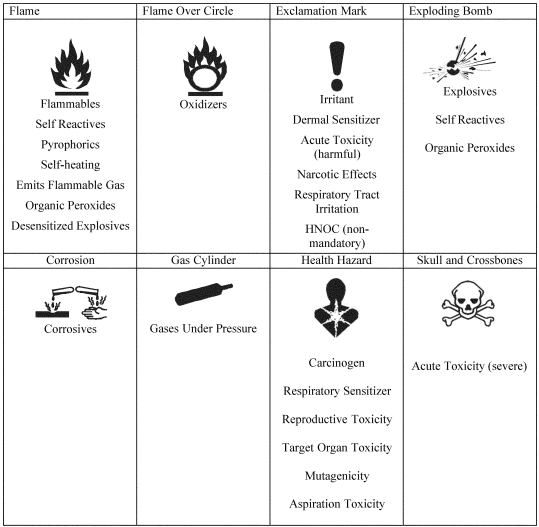
Figure C.2—Exclamation Mark Pictogram
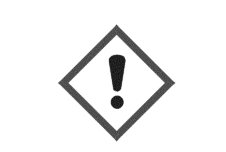
C.2.3.3 The exclamation mark pictogram is permitted (but not required) for HNOCs as long as the words “Hazard Not Otherwise Classified” or the letters “HNOC” appear below the pictogram.
C.2.3.4 Pictograms may only appear once on a label. If multiple hazards require the use of the same pictogram, it may not appear a second time on the label.
C.2.4 Precautionary Statement Text
C.2.4.1 There are four types of precautionary statements presented, “prevention,” “response,” “storage,” and “disposal.” The core part of the precautionary statement is presented in bold print. This is the text, except as otherwise specified, that shall appear on the label. Where additional information is required, it is indicated in plain text.
C.2.4.2 When a backslash or diagonal mark (/) appears in the precautionary statement text, it indicates that a choice has to be made between the separated phrases. In such cases, the chemical manufacturer, importer, or responsible party can choose the most appropriate phrase(s). For example, “Wear protective gloves/protective clothing/eye protection/face protection” could read “wear eye protection”.
C.2.4.3 When three full stops (. . .) appear in the precautionary statement text, they indicate that all applicable conditions are not listed. For example, in “Use explosion-proof electrical/ventilating/lighting/. . ./equipment”, the use of “. . .” indicates that other equipment may need to be specified. In such cases, the chemical manufacturer, importer, or responsible party can choose the other conditions to be specified.
C.2.4.4 When text in italics is used in a precautionary statement, this indicates specific conditions applying to the use or allocation of the precautionary statement. For example, “Use explosion-proof electrical/ventilating/lighting/. . ./equipment” is only required for flammable solids “if dust clouds can occur”. Text in italics is intended to be an explanatory, conditional note and is not intended to appear on the label.
C.2.4.5 Where square brackets ([ ]) appear around text in a precautionary statement, this indicates that the text in square brackets is not appropriate in every case and should be used only in certain circumstances. In these cases, conditions for use explaining when the text should be used are provided. For example, one precautionary statement states: “[In case of inadequate ventilation] wear respiratory protection.” This statement is given with the condition for use “- text in square brackets may be used if additional information is provided with the chemical at the point of use that explains what type of ventilation would be adequate for safe use”. This means that, if additional information is provided with the chemical explaining what type of ventilation would be adequate for safe use, the text in square brackets should be used and the statement would read: “In case of inadequate ventilation wear respiratory protection.” However, if the chemical is supplied without such ventilation information, the text in square brackets should not be used, and the precautionary statement should read: “Wear respiratory protection.”
C.2.4.6 Precautionary statements may be combined or consolidated to save label space and improve readability. For example, “Keep away from heat, sparks and open flame,” “Store in a well-ventilated place” and “Keep cool” can be combined to read “Keep away from heat, sparks and open flame and store in a cool, well-ventilated place.”
C.2.4.7 Precautionary statements may incorporate minor textual variations from the text prescribed in this Appendix if these variations assist in communicating safety information (e.g., spelling variations, synonyms or other equivalent terms) and the safety advice is not diluted or compromised. Any variations must be used consistently on the label and the safety data sheet.
C.2.4.8 In most cases, the precautionary statements are independent (e.g., the phrases for explosives hazards do not modify those related to certain health hazards, and products that are classified for both hazard classes shall bear appropriate precautionary statements for both). Where a chemical is classified for a number of hazards, and the precautionary statements are similar, the most stringent shall be included on the label (this will be applicable mainly to preventive measures).
C.2.4.9 If the chemical manufacturer, importer, or responsible party can demonstrate that a precautionary statement is inappropriate to a specific substance or mixture, the precautionary statement may be omitted from the label.
C.2.4.10 Where a substance or mixture is classified for a number of health hazards, this may trigger multiple precautionary statements relating to medical response, e.g., calling a poison center/doctor/. . . and getting medical advice/attention.
In general, the following principles should be applied:
(a) Where the classification of a substance or mixture triggers several different precautionary statements, a system of prioritization should be applied. If the same medical response statement is triggered multiple times, the label need only include one precautionary statement reflecting the response at the highest level with the greatest urgency, which should always be combined with at least one route of exposure or symptom “IF” statement.
(b) Routes of exposure, including “IF exposed or concerned,” may be combined when triggered with a medical response statement. If the response statement is triggered with three or more routes of exposure, “IF exposed or concerned” may be used. However, relevant “IF” statements describing symptoms must be included in full. If a route of exposure is triggered multiple times, it need only be included once.
(c) This does not apply to “Get medical advice/attention if you feel unwell” or “Get immediate medical advice/attention” when they are combined with an “If” statement and must appear without prioritization.
C.3 Supplementary Hazard Information
C.3.1 To ensure that non-standardized information does not lead to unnecessarily wide variation or undermine the required information, supplementary information on the label is limited to when it provides further detail and does not contradict or cast doubt on the validity of the standardized hazard information.
C.3.2 Where the chemical manufacturer, importer, or distributor chooses to add supplementary information on the label, the placement of supplemental information shall not impede identification of information required by this section.
C.3.3 Where an ingredient with unknown acute toxicity is used in a mixture at a concentration ≥1%, and the mixture is not classified based on testing of the mixture as a whole, a statement that X% of the mixture consists of ingredient(s) of unknown acute toxicity (oral/dermal/inhalation) is required on the label and safety data sheet.
C.4 Requirements for Signal Words, Hazard Statements, Pictograms, and Precautionary Statements

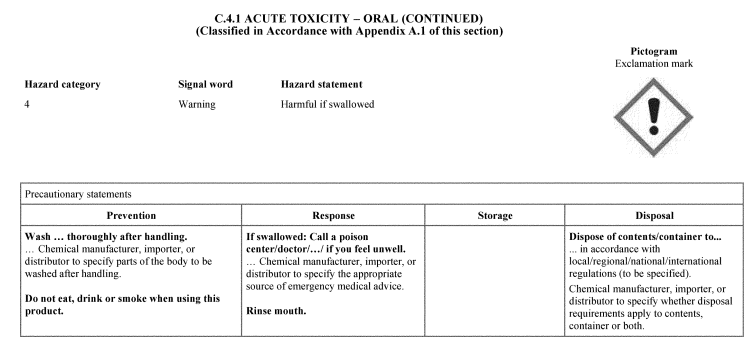

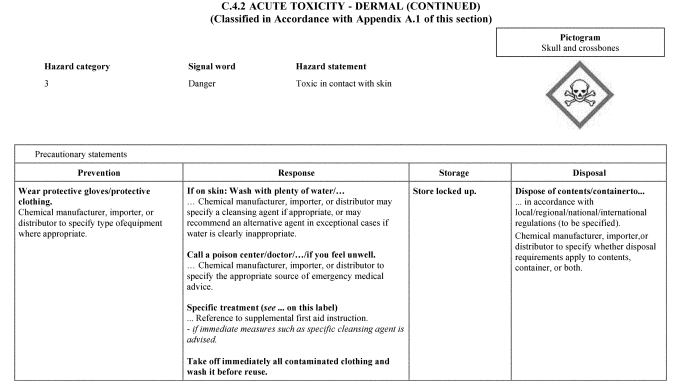
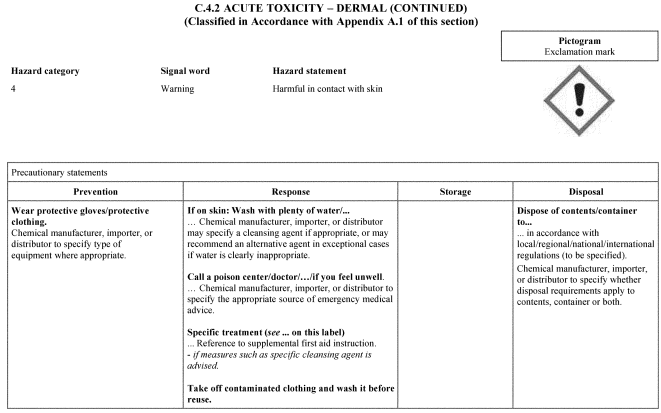
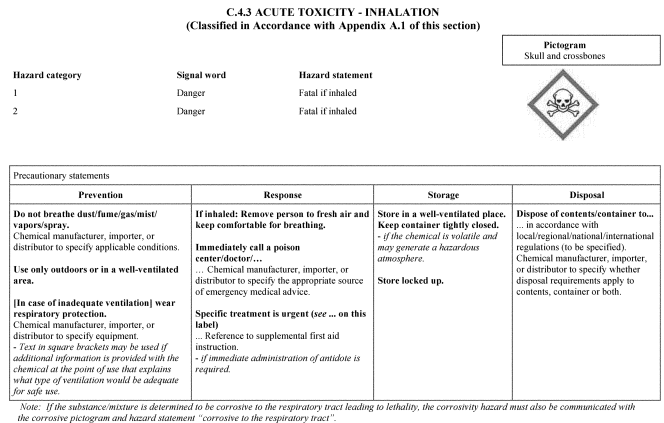

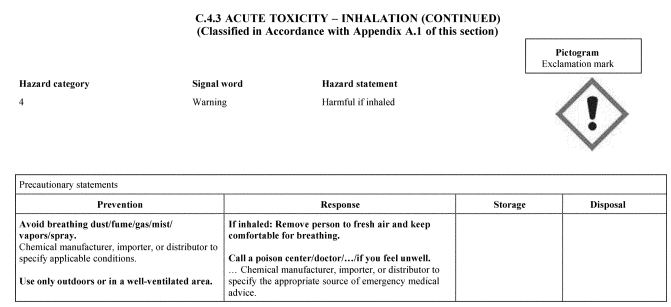
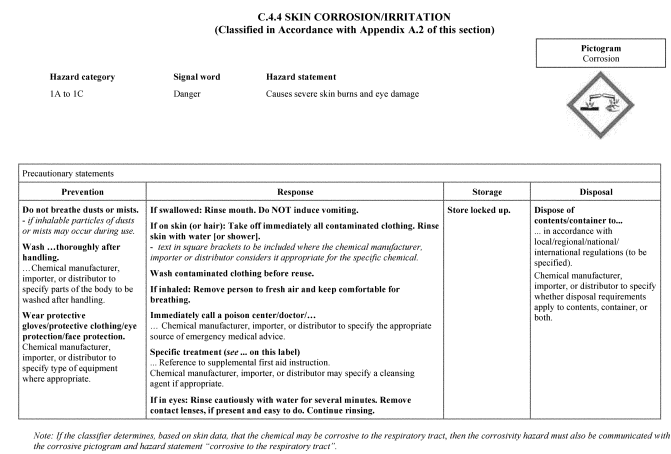
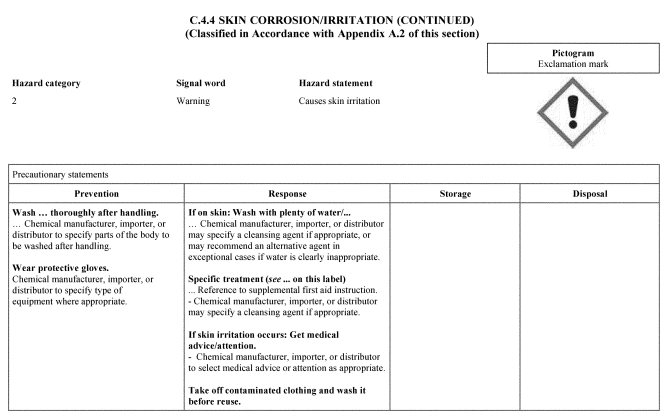
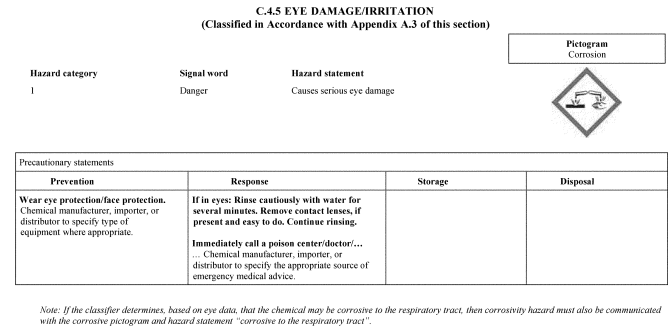
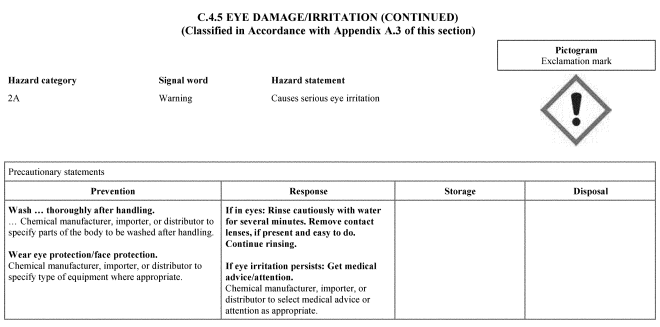
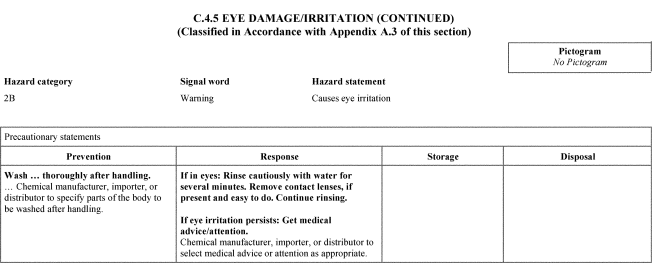
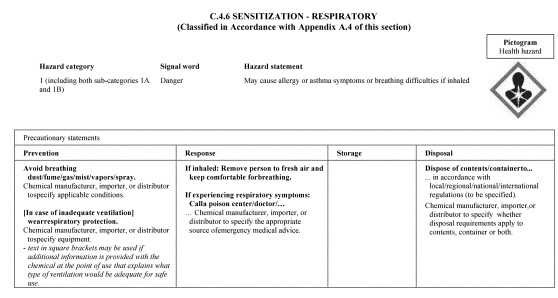
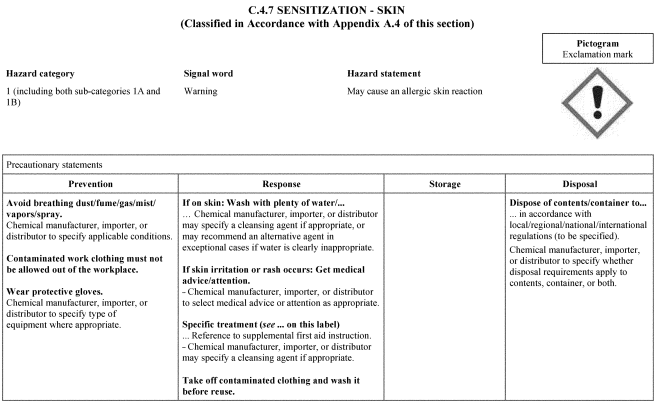

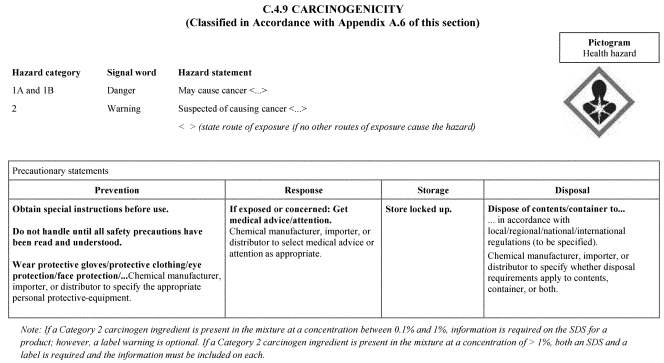
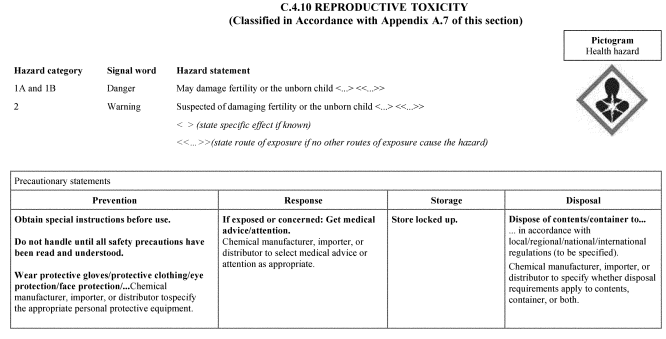

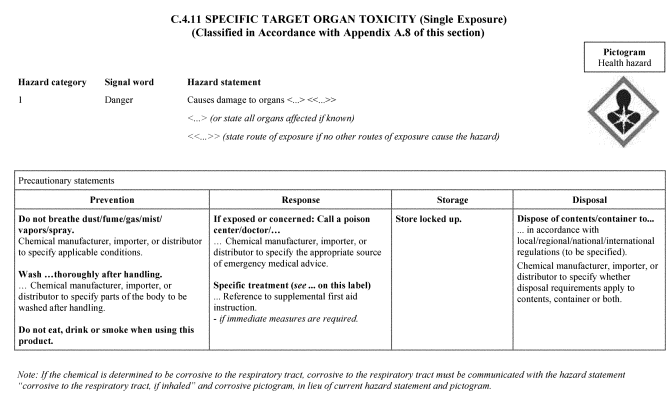

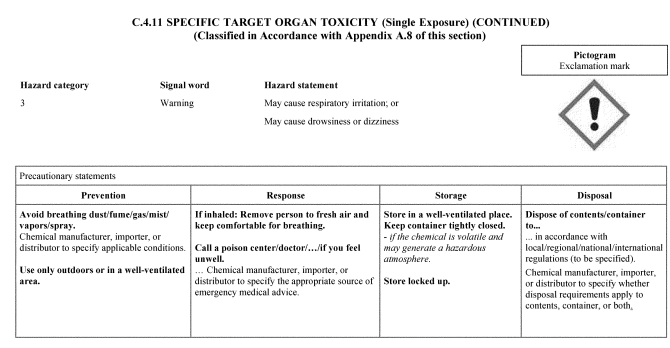
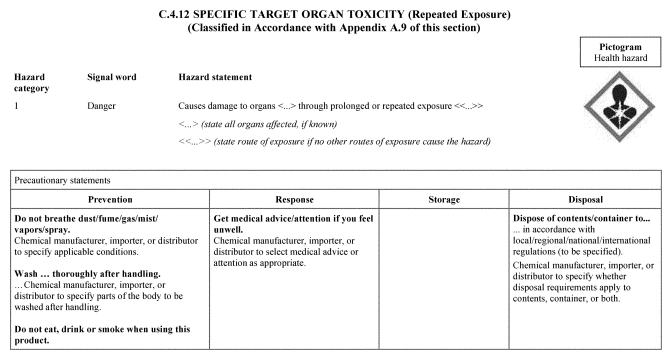

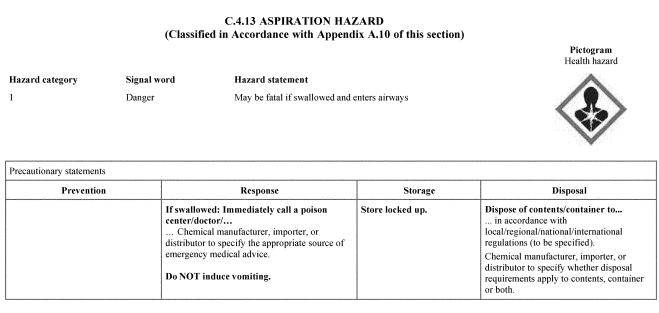

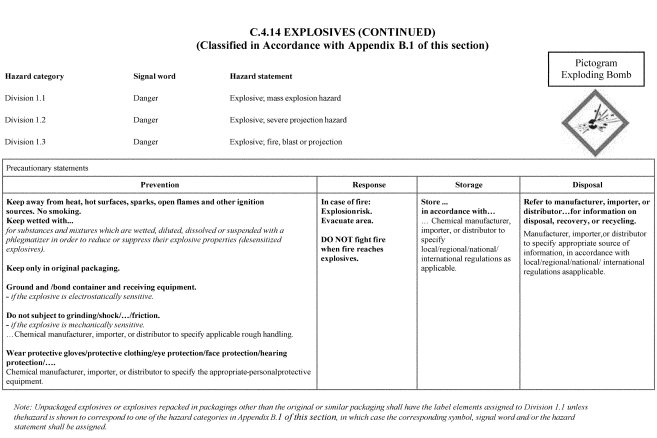
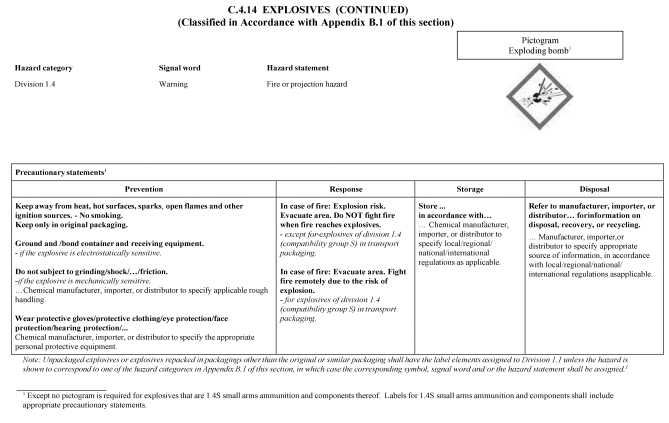
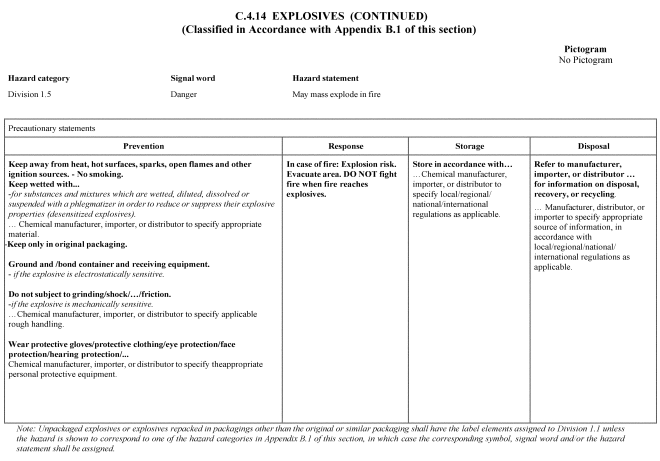
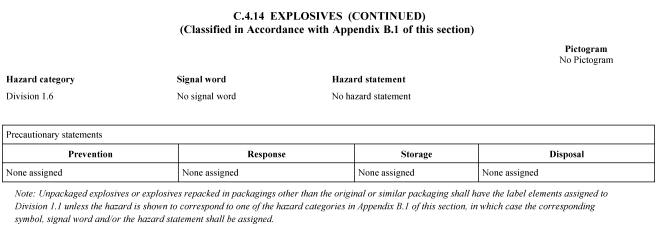

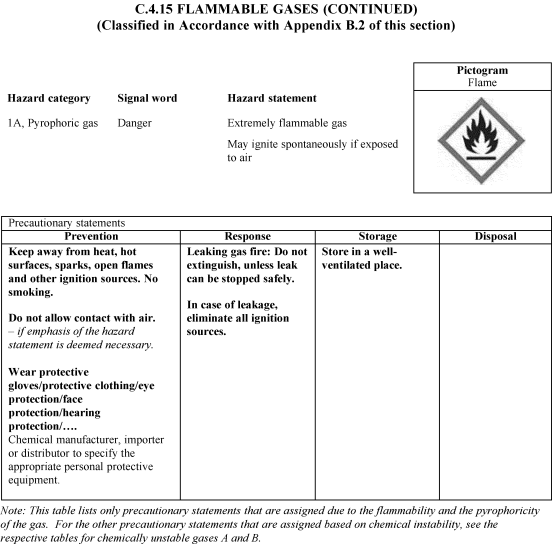

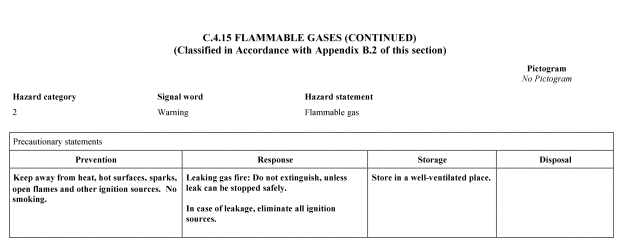
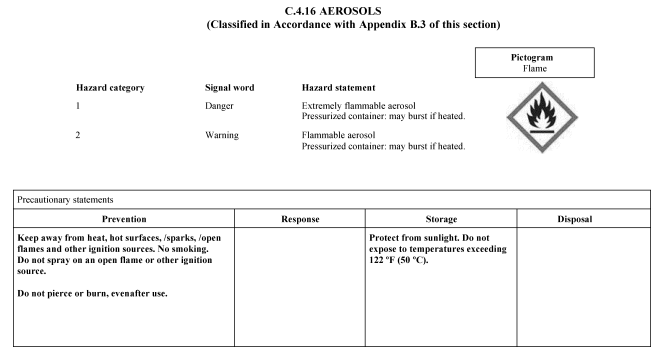
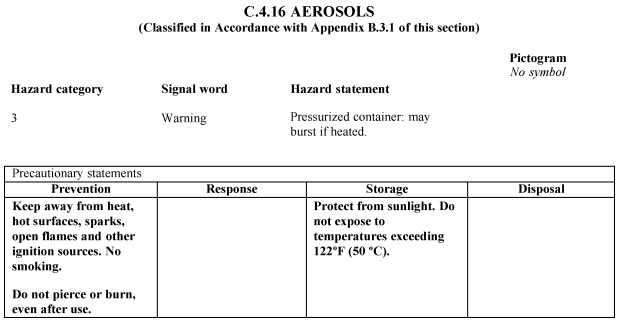
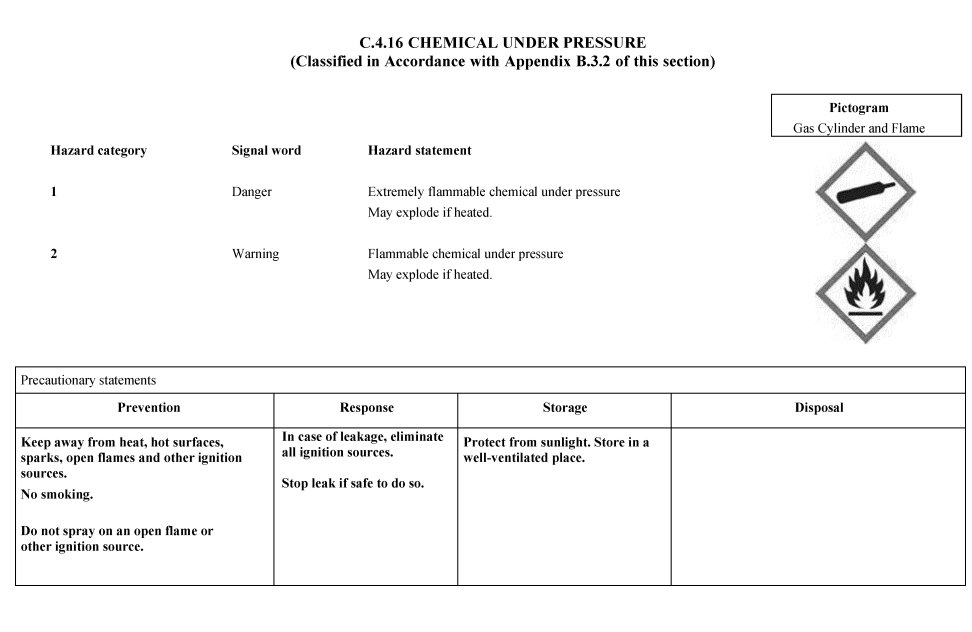

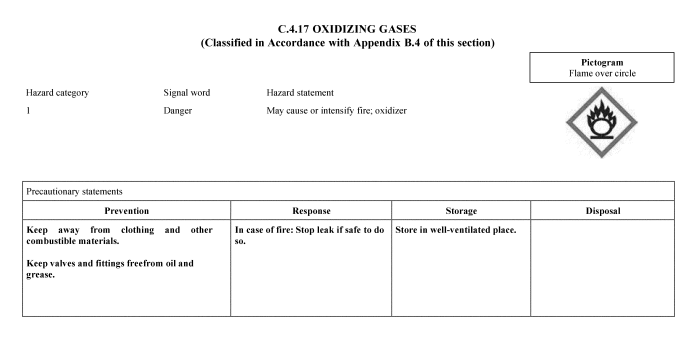
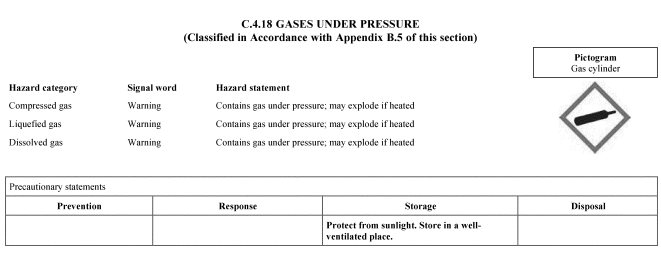
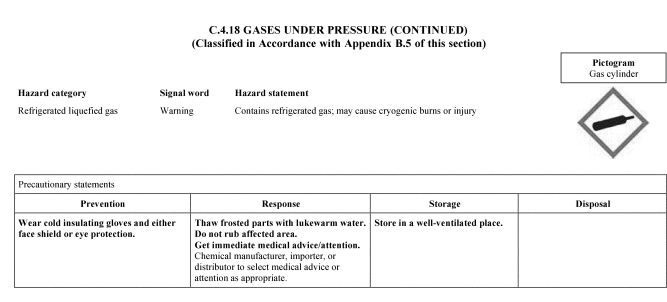
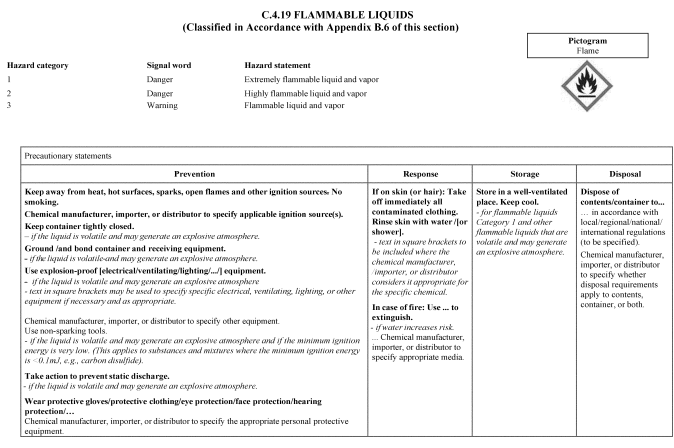

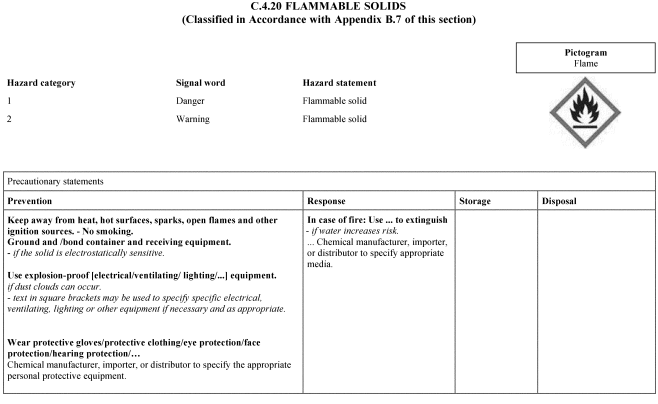
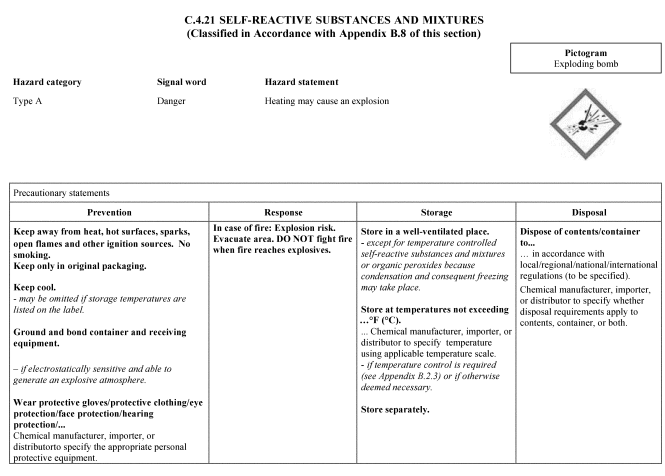


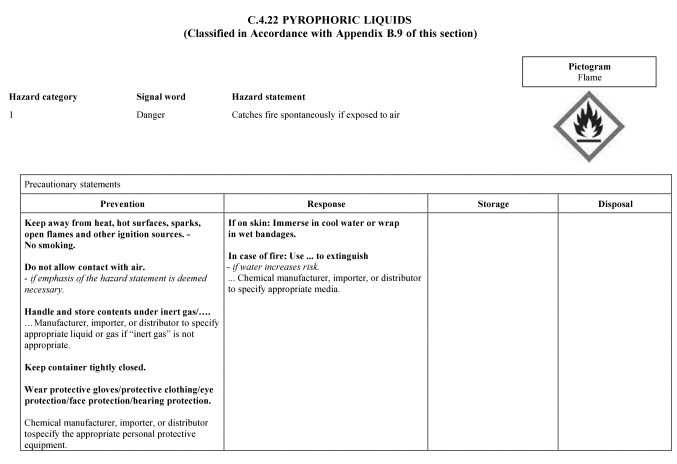
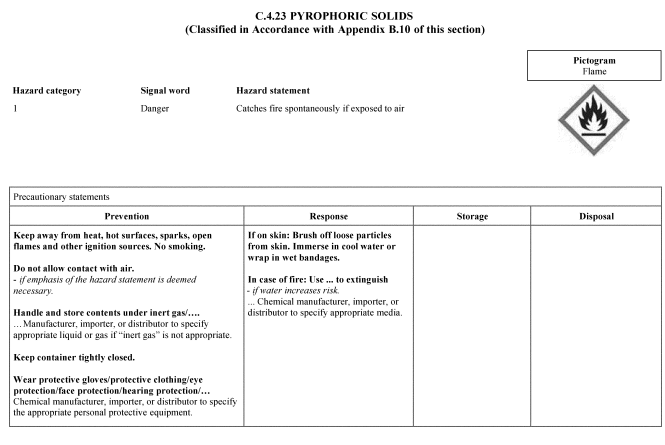
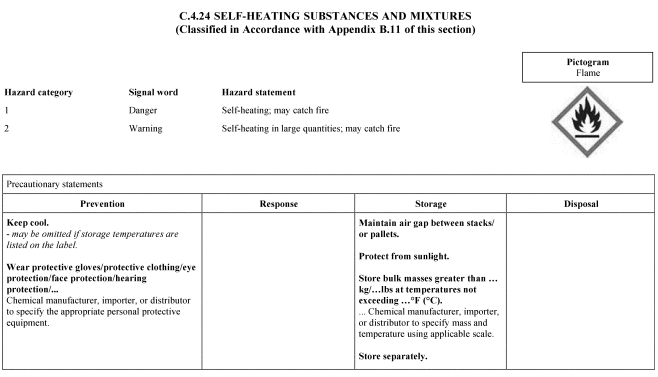
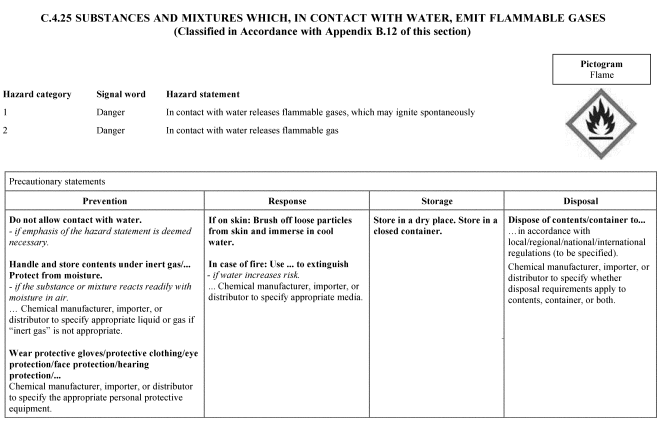
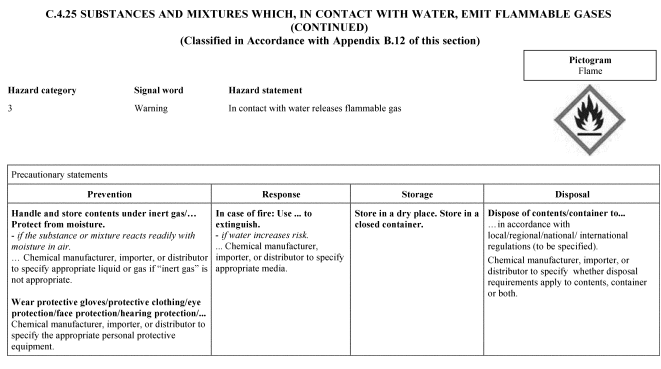
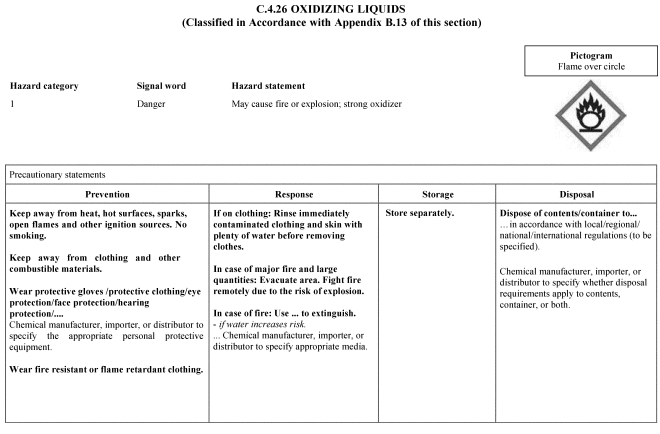
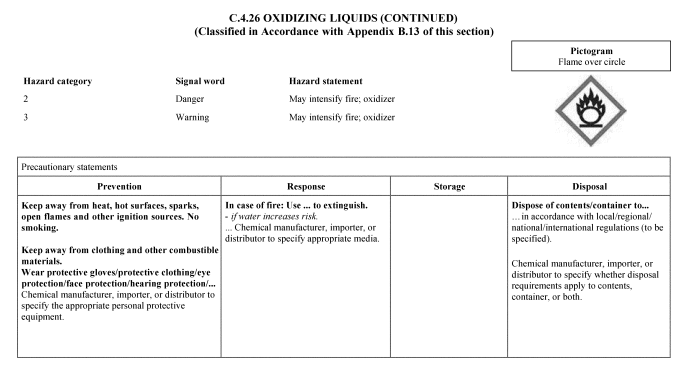
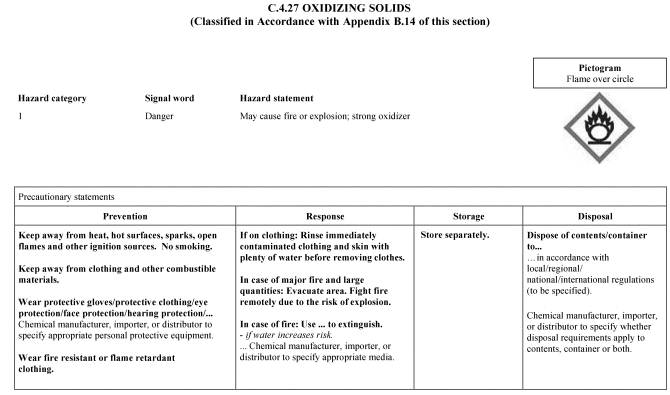
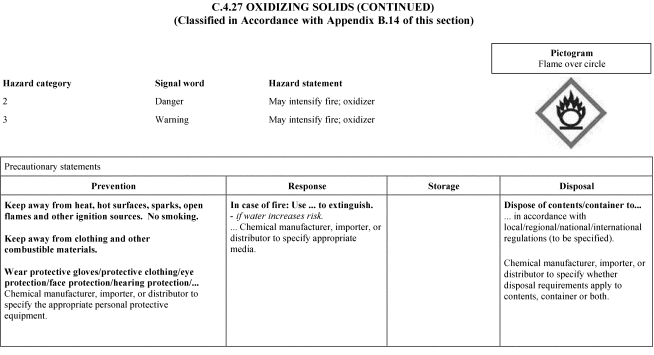
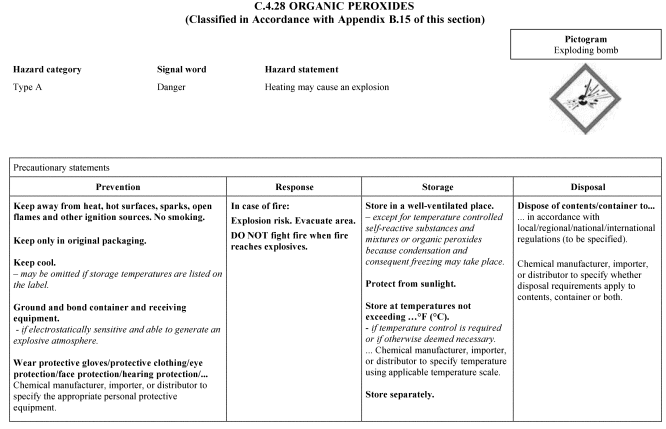

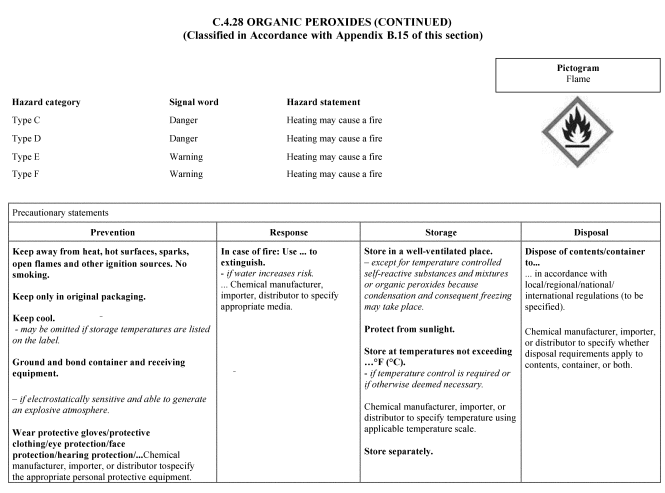
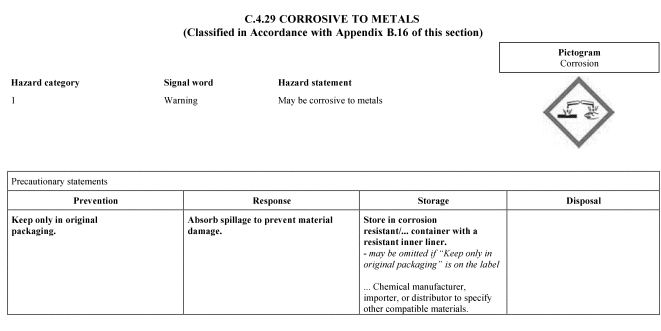
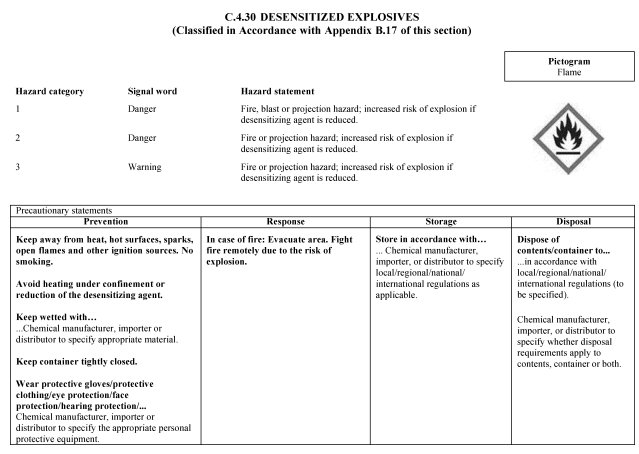


[89 FR 44356, May 20, 2024; 89 FR 81830, Oct. 9, 2024]
['Hazard Communication', 'Toxic and Hazardous Substances - OSHA']
['Hazcom Labeling', 'Toxic and Hazardous Substances - OSHA', 'Hazard Communication']
UPGRADE TO CONTINUE READING
Load More
J. J. Keller is the trusted source for DOT / Transportation, OSHA / Workplace Safety, Human Resources, Construction Safety and Hazmat / Hazardous Materials regulation compliance products and services. J. J. Keller helps you increase safety awareness, reduce risk, follow best practices, improve safety training, and stay current with changing regulations.
Copyright 2025 J. J. Keller & Associate, Inc. For re-use options please contact copyright@jjkeller.com or call 800-558-5011.
